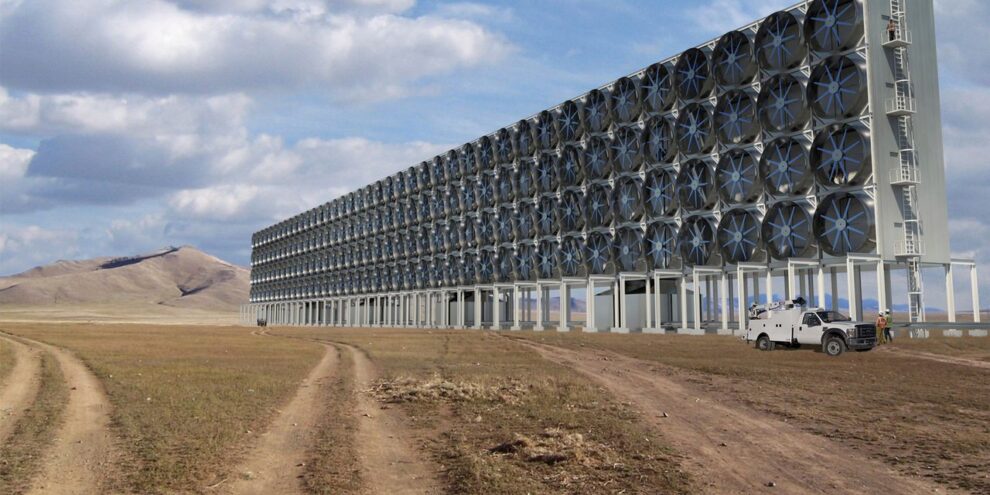
At least half of BlackRock’s biggest clients have signed the UN NetZero Alliance or have made some kind of public commitment to sustainability and reduction of their carbon emissions.
The NetZero Alliance is a consortium of asset owners that have committed to transition their investment portfolios to net-zero greenhouse gas emissions by 2050. Most of BlackRock’s clients are organizations such as institutions, pension funds and college endowments.
BlackRock, the world’s largest asset manager, with $9.46 trillion in assets under management, has made ESG investing a focal point for its strategy. CEO Larry Fink said earlier this year there has been a “tectonic shift” in investors wanting to invest in sustainability-focused companies.
“We started tracking … [and] found that at least half of our biggest clients have signed up to the alliance,” says Carolyn Weinberg, global head of product of the iShares and Index Investments business at BlackRock.
Those clients are looking for investment products to help achieve some of these commitments, Weinberg adds.
She declined to specify the number of clients that have signed the alliance. As of Nov. 5, the asset manager said its iShares division had $3.04 trillion in assets and a global lineup of more than 900 exchange traded funds.
Weinberg says environmental, social and governance investing has been popular in Europe for a while, but until a few years ago, it was still a niche style in the U.S. It was also more values-based with less focus on performance.
Now ESG is part of every conversation she has with U.S. clients. There are a few reasons for that.
“Even if you do not believe in climate change, you have to know what’s going on and why,” she says.
The second reason is performance. Weinberg says that, since Covid’s impact on markets, the company’s ESG indexes outperformed their parent benchmarks.
BlackRock’s data specifically pointed to ESG scores for the gains. She says looking back to the first quarter, 94% of its ESG indexes outperformed their parent benchmarks, and 70% of that outperformance stemmed from the ESG scores.
“That means that ESG scores are consequential to returns. The whole mindset has really impacted this mainstreaming of sustainable investing,” she says.
Morningstar’s research also shows that sustainable funds outperform traditional peers.
Decarbonization as a new focus
With net-zero public commitments by asset owners and institutions, Weinberg says many of their clients are focused on decarbonization. That’s led to the recent spate of new climate-focused ETFs this year. On Wednesday, iShares ESG Advanced Investment Grade Corporate Bond ETF ELQD, -0.19% debuted with $20 million in assets, an ESG version of the $39 billion iShares iBoxx $ Investment Grade Corporate Bond ETF LQD, -0.11%.
Last week the firm launched iShares ESG MSCI USA Minimum Volatility Factor ETF ESMV, +0.84%, with $5 million in assets, an ESG version of the $29 billion iShares MSCI USA Min Vol Factor ETF USMV, +0.63%.
In April, BlackRock launched two carbon-transition ETFs in conjunction with the California State Teachers’ Retirement System (CalSTRS) and other pension and insurance fund backers: the BlackRock U.S. Carbon Transition Readiness ETF LCTU, +0.67% and the BlackRock World ex U.S. Carbon Transition Readiness ETF LCTD, +0.63%. Together the funds have more than $2 billion in assets.
The ESG version of the two new funds are part of a long-term trend to offer sustainable versions of core products and their net-zero goals, as described in Fink’s 2020 and 2021 letters to clients. The new funds bring the total number of globally available iShares sustainable ETFs to more than 150, with $149.1 billion in assets. The firm says in 2020 sustainable ETFs saw $47 billion in net inflows.
The two new funds exclude certain businesses such as tobacco, controversial weapons, thermal coal and other restrictions. For the minimum volatility factor, the methodology seeks at least a 20% improvement in its weighted-average, industry-adjusted ESG Score relative to the parent index at each rebalancing and a 30% reduction in carbon at each rebalancing.
For the bond fund, Weinberg says the new methodology increases the overall credit quality slightly while lowering the weighted average carbon intensity by 67%.
Where demand is strongest
The launch of these two new ETFs comes at a time when both the minimum volatility and corporate bond funds have seen outflows year-to-date, according to ETF Research Center.
Weinberg says BlackRock initially launched a version the equity fund in Europe, with demand coming from global institutions and model portfolio builders, before launching in the U.S. For both of the funds, they are expecting more demand from firms that build asset allocation models and other model portfolio builders, such as those used by robo-advisers, registered investment advisers and home offices.
Given that real interest rates are negative — that is, the yield of the 10-year U.S. Treasury currently lags inflation — who wants a bond fund?
Weinberg says that, in the case for fixed income, “certainly yield is challenging.” But a fund like the ESG corporate bond fund remains a “building block” to supplement existing fixed income holdings and a way to “customize the outcome of the portfolio from the decarbonization.”
Debbie Carlson is a MarketWatch columnist. She doesn’t own any of the funds or stocks mentioned in this article. Follow her on Twitter @DebbieCarlson1.











Add Comment